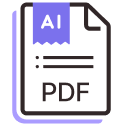
How to digitize & validate CIPLs
Any operator managing freight shipments is likely all too familiar with the pain points associated with commercial invoices and packing lists. Vendors often share these documents in Excel formats that are messy, inconsistent, and hard to structure—think: Excel files that look like PDFs, but are actually ripe with spreadsheet formatting oddities. Instead of focusing on cost mitigation strategies, brands are forced to spend time extracting and verifying this data against PO records from systems like NetSuite to ensure accurate receiving—resulting in hours of tedious work while introducing significant operational risk.
Using Parabola’s AI-powered Excel parser, brands are quickly deploying workflows that make it simple to extract critical information from CIPL files—no matter the format. Beyond parsing, data is automatically cleaned, combined with PO records, and validated to catch discrepancies. Visualize issues in real-time, flag payment variances, and export clean, ERP-ready data without the manual data entry.

Video overview
Why Parabola







As soon as we launched the first component of the automation, we saw an increase in our top-line compliance figure. It’s almost like every week we hit a new all time best.
What is CIPL digitization?
CIPL digitization is the process of extracting structured data from vendor-provided commercial invoices and packing lists—typically Excel or PDF files—and validating that data against PO information from internal systems like ERPs and WMSs. This ensures accurate receiving, identifies discrepancies, and allows for streamlined system updates.
How to digitize CIPL documents in Parabola
- Use the Pull from inbound email steps to import CIPL Excel or PDF files into Parabola. Within the step, change the parsing setting to Extract with AI and specify the rows and columns you'd like to pull from the document.
- Pull in PO data using steps like Pull from NetSuite.
- Clean data with steps like Standardize with AI and Edit columns.
- Combine datasets using the Combine tables step to match CIPL data with PO data.
- Identify discrepancies using a combination of the Custom transform, Add math column, and Filter rows steps.
- Report on discrepancies using the Visualize step to highlight issues like missing units or billing overages.
- Export reconciled data using steps like Email a file attachment or directly integrate with an internal tool.
Tips for CIPL digitization in Parabola
- The Pull from inbound email step is packed with AI capabilities that make it easy to pull clean data from messy PDFs and Excel files. The more context and examples you provide to that step, the better your parsing results will be.
- Standardize SKU formats and vendor names early to enable clean joins with PO data
- Utilize the Custom transform step for complex data transformation after parsing your data
- For a smoother export, format your output to match ERP requirements using the Edit columns step before sending
What other resources are available on CIPL digitization & validate?
- To start building your own CIPL digitization Flow, check out the Template above and Parabola University.







